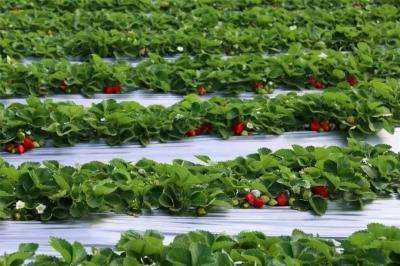The application of agricultural AI is accelerating. At the beginning of this century, it had already emerged in China, with intelligent robots for farming, planting, and harvesting, as well as intelligent systems for disease and pest detection and soil moisture prediction. In recent years, sensors, drones, and agricultural robots with independent intellectual property rights have become increasingly mature and appear in more and more agricultural scenarios. In 2020, the Ministry of Agriculture and Rural Affairs and the Central Network Information Office issued the “Digital Agriculture and Rural Development Plan (2019-2025)”, proposing to accelerate the research and application of agricultural artificial intelligence. Since the release of ChatGPT, the cognitive big model technology has continued to evolve, and similar products have been continuously launched in China. In this context, the launch of large-scale model products in the agricultural field is naturally not surprising.
The agricultural application of artificial intelligence is very extensive, involving perception, decision-making, control, operation, etc., and agricultural AI dialogue robots are just one of them. The characteristic of traditional agriculture is to rely on the weather for food, while China’s smart agriculture originated from IoT devices and their corresponding agricultural information systems. By monitoring and improving the growth environment, agricultural production is more stable and controllable. Nowadays, with the addition of a new generation of information technology, agricultural data elements will continue to play a role. For example, with the help of pig face recognition, combined with acoustic features and infrared temperature measurement, it is possible to timely determine whether pigs are sick from their body temperature, calls, etc., thereby warning of the epidemic and scientific breeding.
Smart agriculture is the use of technology to arm agriculture and drive various production factors such as capital, manpower, and land. Many countries prioritize smart agriculture as their development direction, and global smart agriculture presents two major characteristics. One is highly integrated. All kinds of equipment and technology are highly integrated, and the Internet of Things, Big data, artificial intelligence, cloud computing, etc. are combined to form an intelligent production system. The Netherlands, with a land area of only over 40000 square kilometers, integrates smart agriculture into facility agriculture and can produce 54.4 tons of vegetables per hectare, 2.4 times that of China. The second is data integration. Not only applied in the production field, but also to connect the production, processing, circulation, and sales links, establish a large agricultural database, and achieve efficient integration of production and sales. Some countries have established an agricultural outlook system based on this, which directly affects the trend of futures markets and possesses a strategic weapon to dominate the world agricultural product market.
At present, artificial intelligence can become a powerful auxiliary for agricultural production, but it is far from sufficient to completely replace people and their decision-making. This is related to its level of development. On the one hand, there is data, but wisdom is lacking. It is difficult to effectively integrate industry data, social data and enterprise data. There is a lack of in-depth mining, analysis and utilization of agricultural Big data, and core functions such as forecasting, early warning and resource allocation are far from being played. On the other hand, there are demonstrations but there is a lack of scale. Due to the high threshold and price, the current application is limited to a few entities, and there are many problems such as incremental inefficiency and technology detachment from reality in many places. In addition, the core of artificial intelligence is data, algorithms, and computing power. However, agricultural production objects have biological characteristics and low comparative benefits, making data collection difficult, algorithm requirements high, and computing power resources scarce, resulting in great difficulty in implementation.
Empowering agriculture with artificial intelligence is a good thing, but it is also urgent. Small farmers in large countries are the basic national conditions and agricultural conditions of our country. No matter how advanced the technology is, both farmers and agricultural enterprises face the problem of whether it is usable, affordable, and cost-effective. On the one hand, they pursue increasing production, improving quality, and saving costs, requiring the introduction of intelligent equipment; On the other hand, they have a stable mindset, are sensitive to short-term costs and benefits, and are hesitant to apply new technologies. It can be seen that the implementation of new technologies is not achieved overnight. It is necessary to continuously iterate and optimize to break through the breakeven point. We should start from reality, actively explore application scenarios, create solutions with rich content, diverse modes, and diverse carriers, reduce user costs, and strive for practical results.


No reply content